Gallery: Jaw-Dropping Images of Life Under the Sea
Lionfish larva
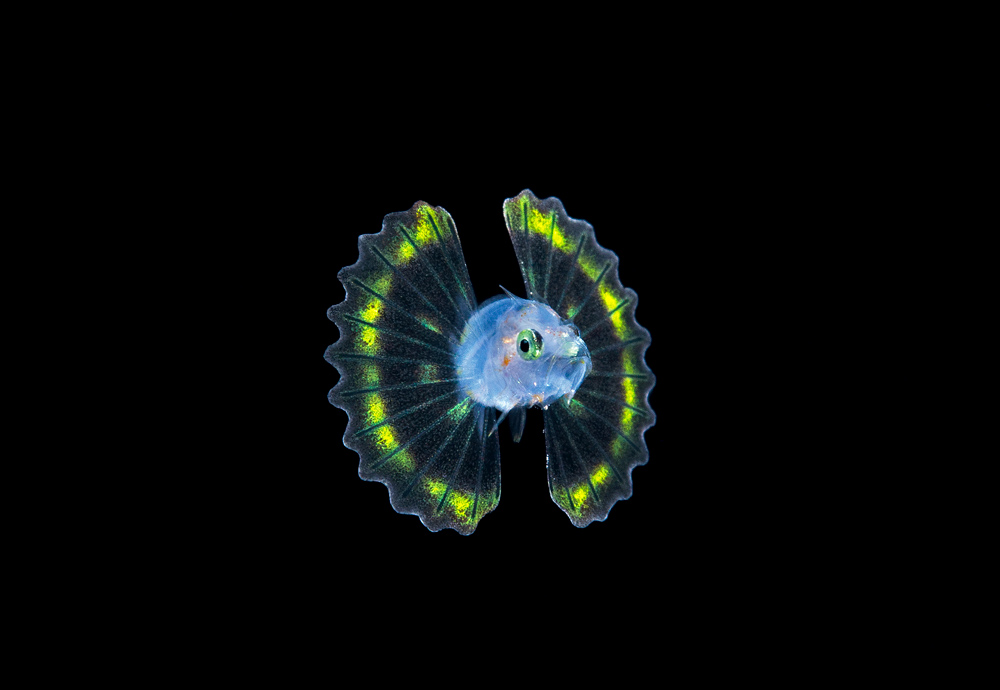
Here, a rare, tiny lionfish larva fans out its fins for photographer Steven Kovacs, who captured the divine image during a dive off Palm Beach, Florida. "Many of the animals seen during black water dives are very small and can move quickly when illuminated by powerful dive lights, so getting a nice image is, not only challenging but, very rewarding as well," Kovacs said. Kovacs won a Commended spot in the Macro category of the Underwater Photographer of the Year contest.And he had a lot of competition: Around 4,500 images of underwater animals and scenes were submitted by photographers representing 67 countries, vying to win Underwater Photographer of the Year. In addition to the top spot, photos could win awards in any of the 10 categories, including Macro, Wide Angle and Behavior. Live Science chose some of our favorites, revealing stunning close-ups of fish, shrimp and other undersea life.
One in a Million
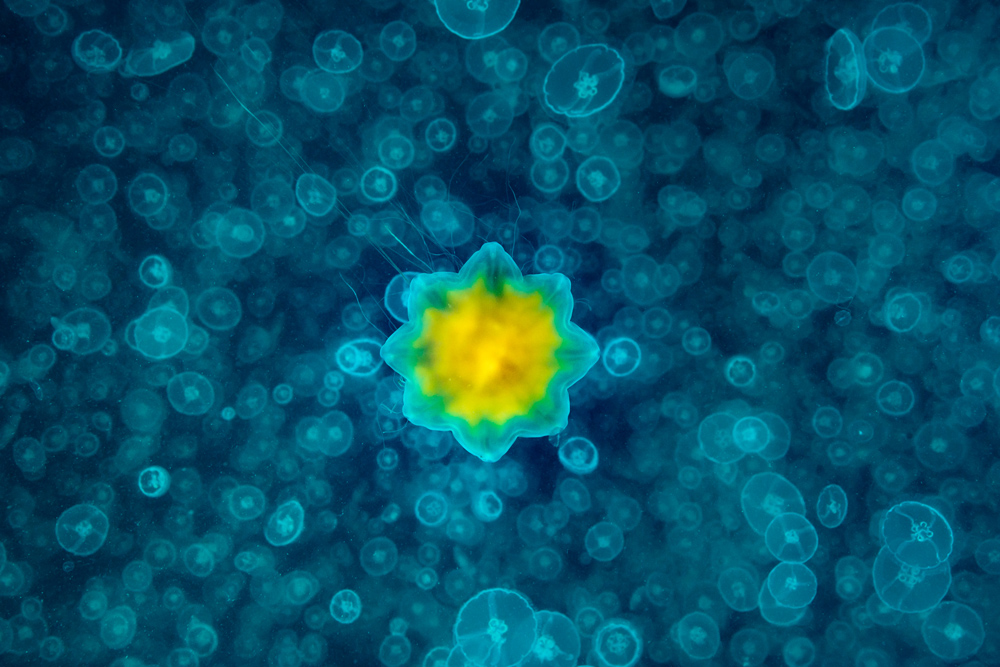
Ron Watkins captured this image, entitled "One in a Million," of a whimsical-looking Lion's mane jellyfish amongst a bloom of moon jellyfish while searching for salmon sharks in Alaska.
"We cruised in the boat looking for their dorsal fins for hours and that is when we came across an enormous moon jellyfish bloom that stretched for several hundred meters," Watkins said in a statement. "It was surreal and more dense than anything I had ever experienced, including Jellyfish Lake in Palau. I came across this Lion's Mane Jellyfish rising from the bloom towards the surface and positioned myself directly over it to capture this image." Watkins' shot won the Wide Angle category.
Fire Shelter
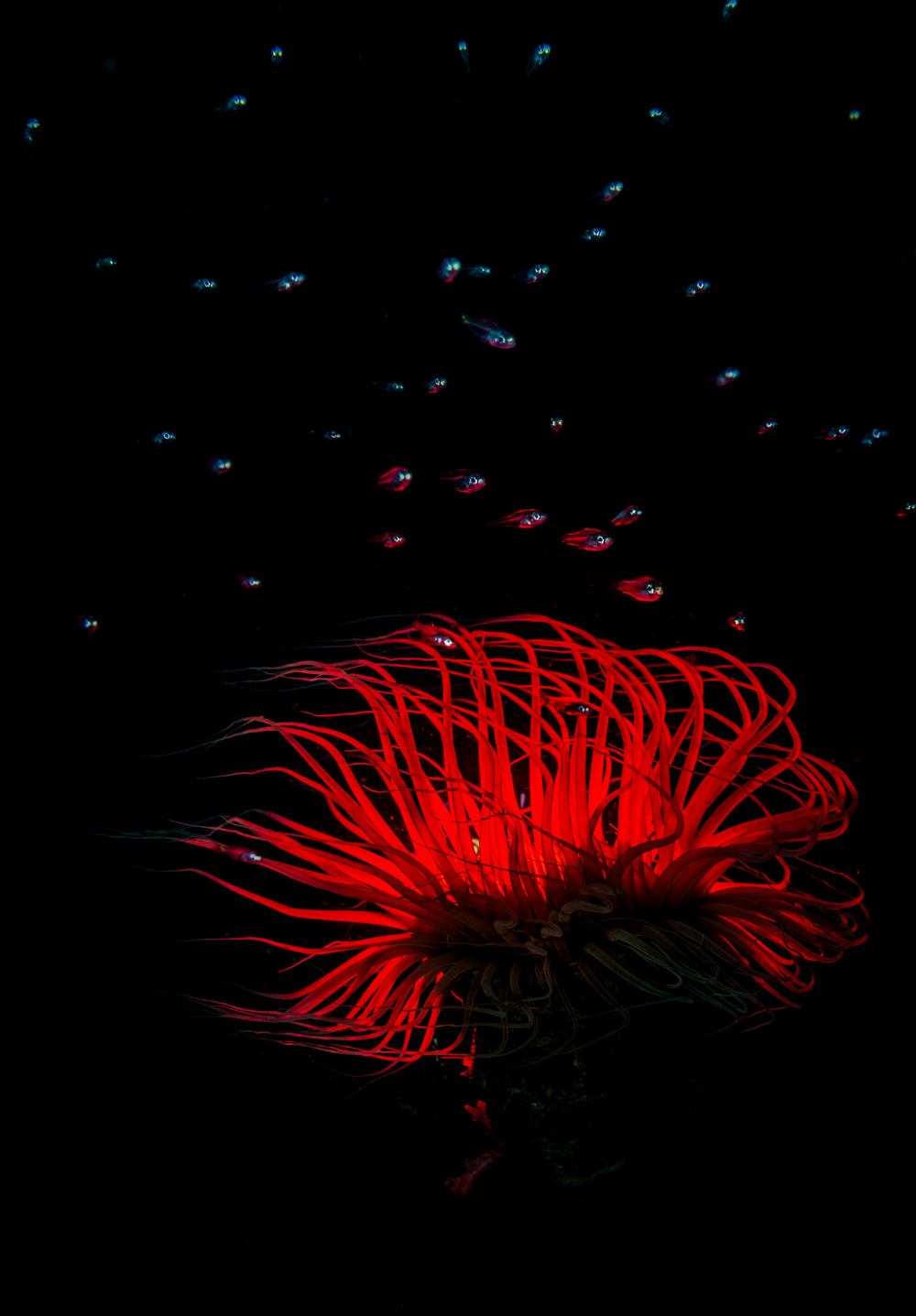
Romanian photographer Dragos Dumitrescu wrote this about this alien-like image he captured in the Dauin Marine Sanctuary in the Philippines: "The underwater realm is stunning. But most of the time we tend to see only the rare and unique critters while the most common subjects are set aside. This tube anemone (which you can find almost everywhere) is a shelter to a bunch of juveniles, until they can manage on their own. They have an entire universe in there with plenty of adventures taking place. My purpose was to bring out the beauty, which is not regularly seen. I used the backlighting technique and also a fine touch of strobe from the front to make the juveniles pop-up."
Dumitrescu's photo snagged third place in the Macro category.
Shrimp Backlight
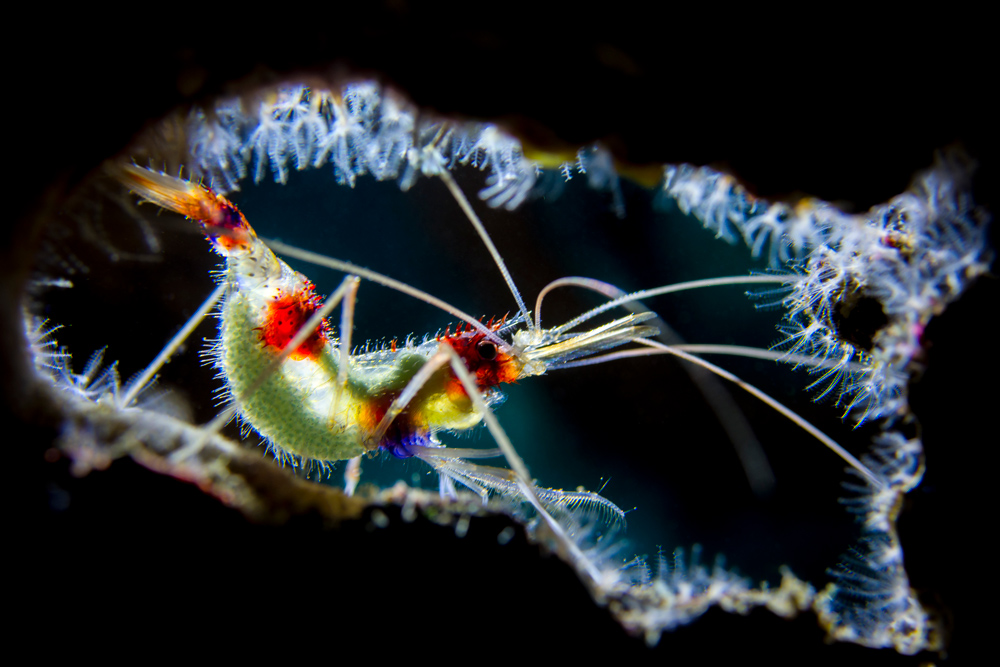
Fábio Freitas won a Highly Commended award in the Macro category for this shrimp image, which he captured off Bonaire Island at a spot called Something Special.
"Shrimps are challenging subjects to photograph; we have to portray their beautiful colors and shape, and especially focus on the eyes," Freitas said. During a late-afternoon dive "I saw this shrimp underneath the rock in a perfect position to make a backlighting technique, using continuous lighting. Immediately I turned off my strobes and asked my buddy to put the lighting behind the shrimp; he was very good putting the light exactly where I wanted it. I took only 4 pictures and then the shrimp vanished. It is important to know your techniques and when to use them, it is the key to making those special pictures with something more than the norm."
Sign up for the Live Science daily newsletter now
Get the world’s most fascinating discoveries delivered straight to your inbox.
Expectant Parents
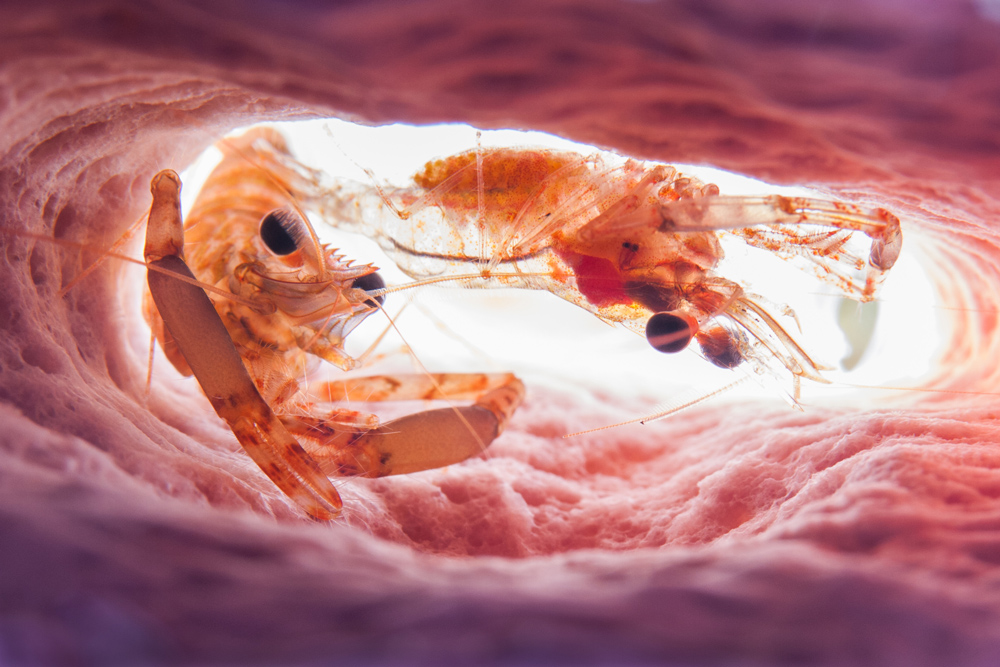
Susannah H. Snowden-Smith snagged a "Highly Commended" in the Macro category for this shot of a pair of claw shrimp resting in the bottom of a purple vase sponge. "Two claw shrimp are a rare find on Grand Cayman; these are the only ones I've seen in over 300 dives on the island," Snowden-Smith said. "When diving, I have made a habit of looking into every purple vase sponge I come across. On this particular day, my husband and I went to a secret spot on Grand Cayman. We call it 'Magicland' as we always find the most amazing creatures there. I had never seen these shrimp before, two claw shrimp as I would come to find out later. I placed one strobe along the side of the sponge to provide backlighting, and another pointing into the top of the sponge to provide fill light."
Fishing fish
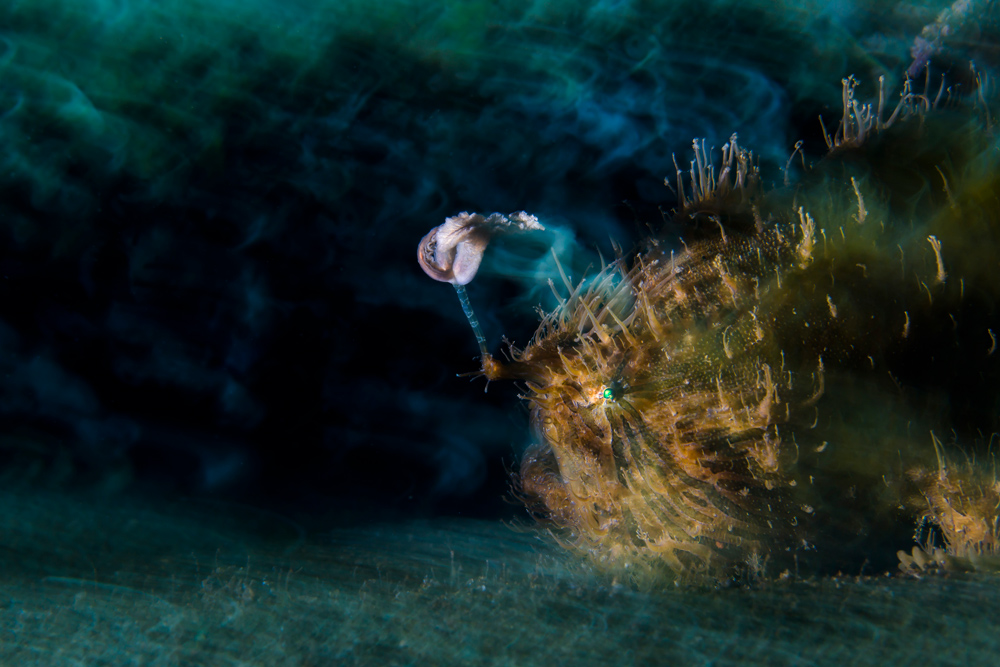
This odd-looking creature, a frogfish, likes to "fish for fish," and that's just what Dragos Dumitrescu captured in this photo taken off the Philippines. "This picture was about capturing the hypnotic movement of the frogfish's luring. Fascinated by these weird-looking anglerfish, with their lures and baits, I was trying to transfer the 'magic' that attracts their unsuspecting prey into a still image," Dumitrescu said.
Black light
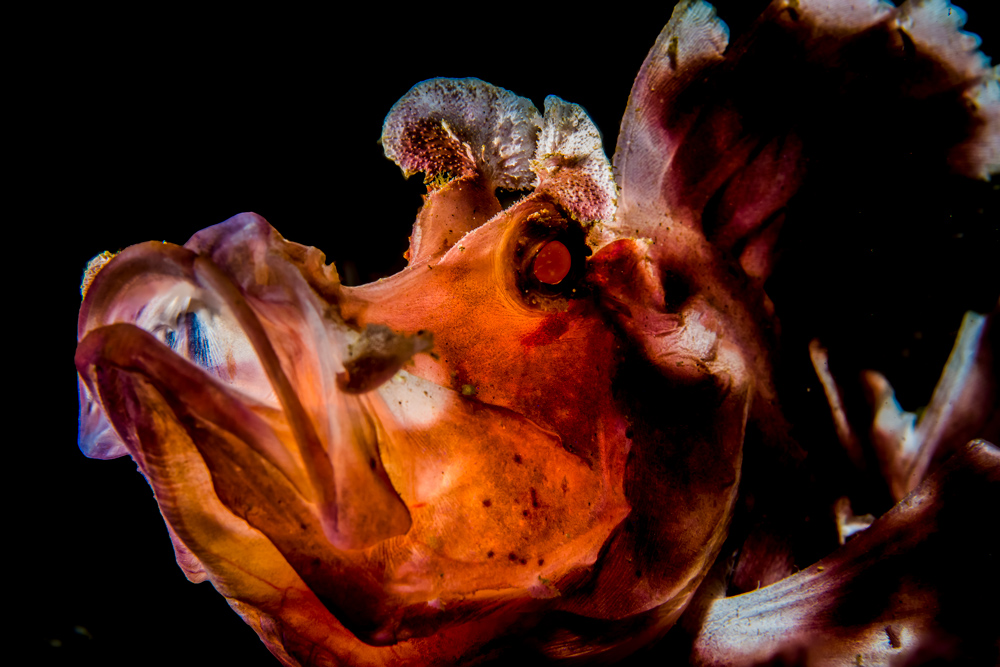
John Parker got a Highly Commended award in the Macro category for this backlit shot of a Paddle-flap Rhinopias, a type of scorpionfish, at a spot called Seraya Secrets off Bali, Indonesia. "I took 30 to 40 frames to get the lighting right and get a black background which was difficult as it was daylight and at only 12 meters," Parker said.
Clownfish Swirl
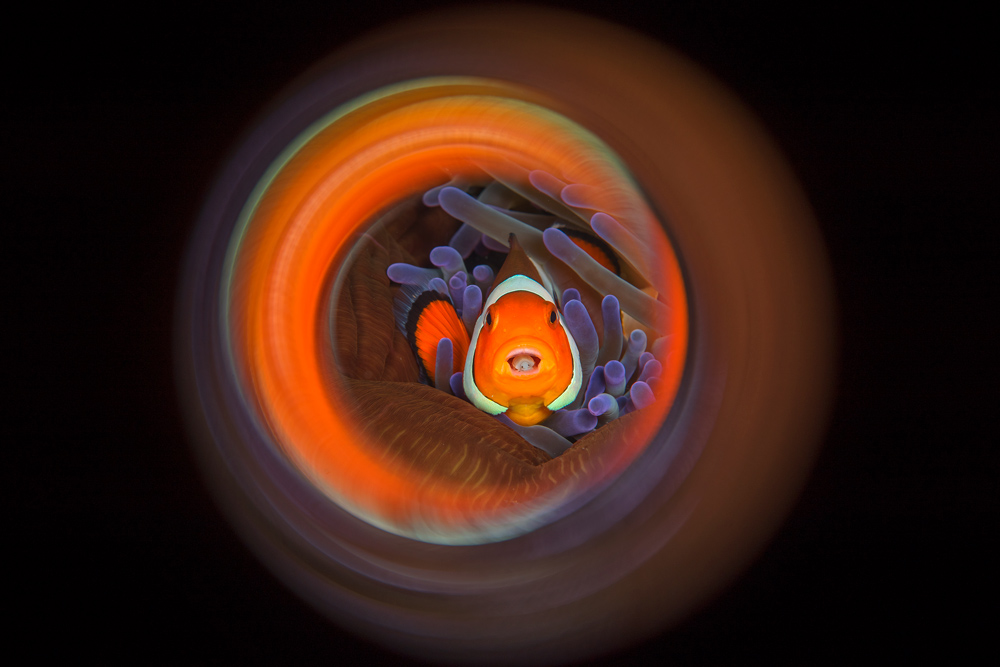
Toward the end of a dive at a spot called Lembeh in Indonesia, Luc Rooman saw this anemone and clownfish. Rooman had to take several pictures through the aluminum tube that he mounted on his port so that he could get a round-mirror effect. The creativity paid off, as Rooman got a Commended award in the Macro category. One of the judges, Alex Mustard, said: "Creative techniques have always been a part of photographic competitions. The key to winning is to be original and use the technique well, with a subject it suits. The colors of the anemone fish make this swirl stand out."
Nudibranch Art
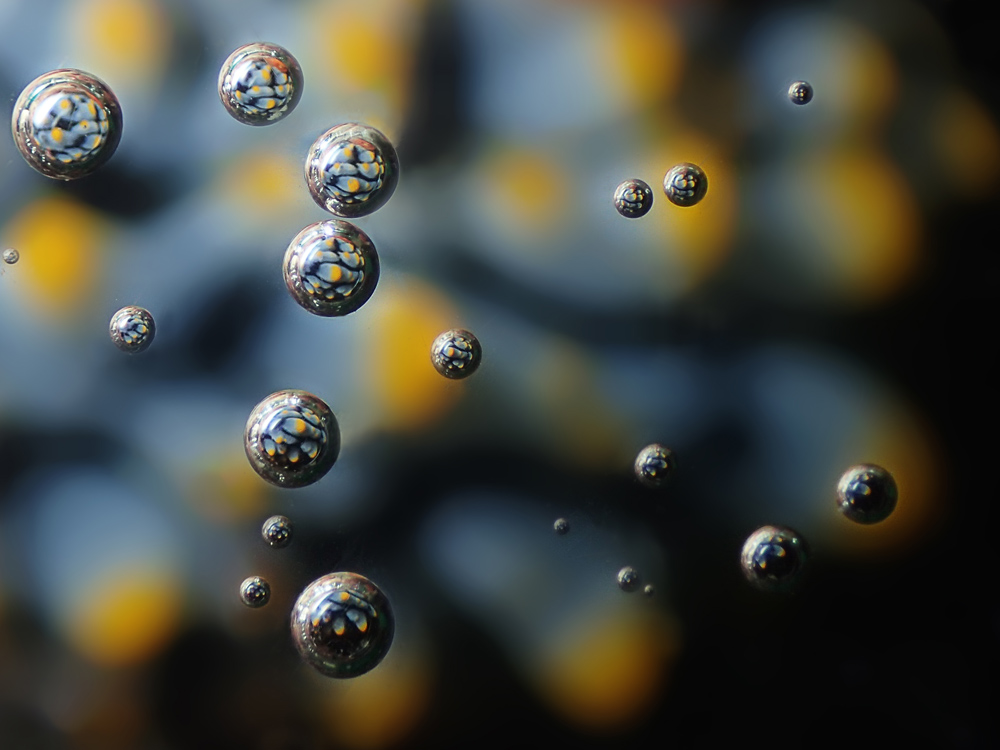
Katherine Lu shot this nudibranch at Semakau off Singapore. "I wanted to do something different and turn a nudibranch commonly found in our waters into a piece of art. I have always been fascinated by bubbles and the inspiration for this photo came about when I was reading about aquatic plants that produce oxygen bubbles from photosynthesis," Lu said. "The images of the bubbles sticking to the green leaves had an abstract quality and hence came the idea to create 'Nudibranch Art.'"
Cleaner
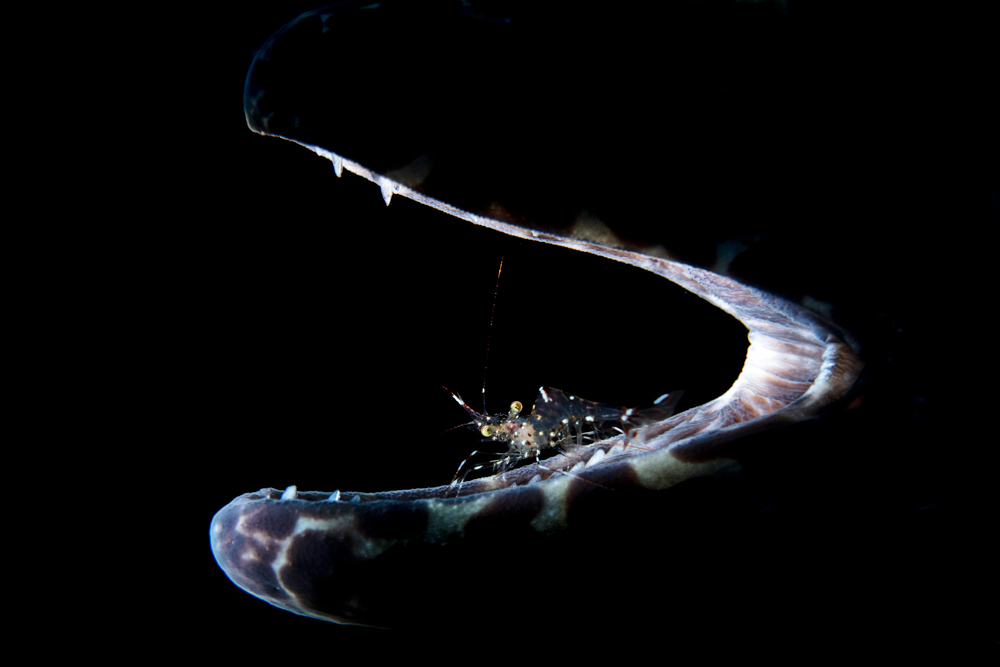
Liang Fu won third place in the Behavior category for this underwater photograph of a moray eel with "cleaner shrimp" in its mouth, while diving at Tulamben in Indonesia. "On the first dive, I took a few front-facing photos with cleaner shrimps in the moray eel's mouth. When I surfaced, I came up with an idea of a side-face moray eel, widely opening its mouth with the cleaner shrimp inside. So I tried a second dive and it turned out to be how I had imagined it," Fu said.
Views at dawn
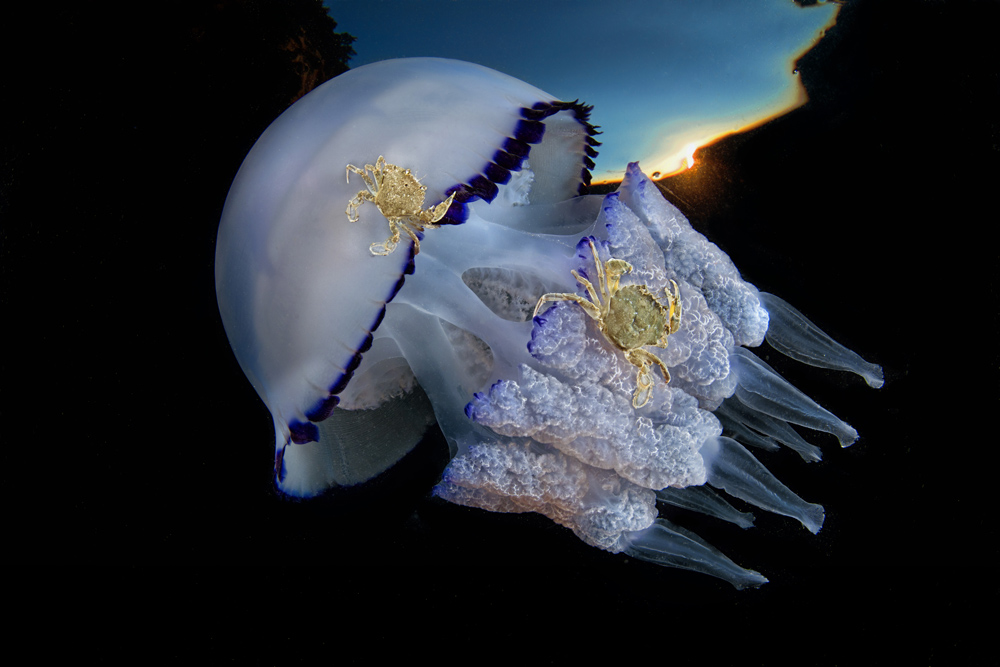
Pasquale Vassallo captured this image of crabs tending to a barrel, or frilly-mouthed, jellyfish in the Gulf of Naples, Italy. "Over the past few months, my photographic work has focused primarily on the large presence of species of jellyfish Rhizostoma pulmo, in the Gulf of Naples. In this picture a couple of crabs, Liocarcinus vernalis species, are its tenants. When the jellyfish rub the sandy seabed, the crabs jump on it and get carried to different areas," Vassallo said.
Jeanna Bryner is managing editor of Scientific American. Previously she was editor in chief of Live Science and, prior to that, an editor at Scholastic's Science World magazine. Bryner has an English degree from Salisbury University, a master's degree in biogeochemistry and environmental sciences from the University of Maryland and a graduate science journalism degree from New York University. She has worked as a biologist in Florida, where she monitored wetlands and did field surveys for endangered species, including the gorgeous Florida Scrub Jay. She also received an ocean sciences journalism fellowship from the Woods Hole Oceanographic Institution. She is a firm believer that science is for everyone and that just about everything can be viewed through the lens of science.










